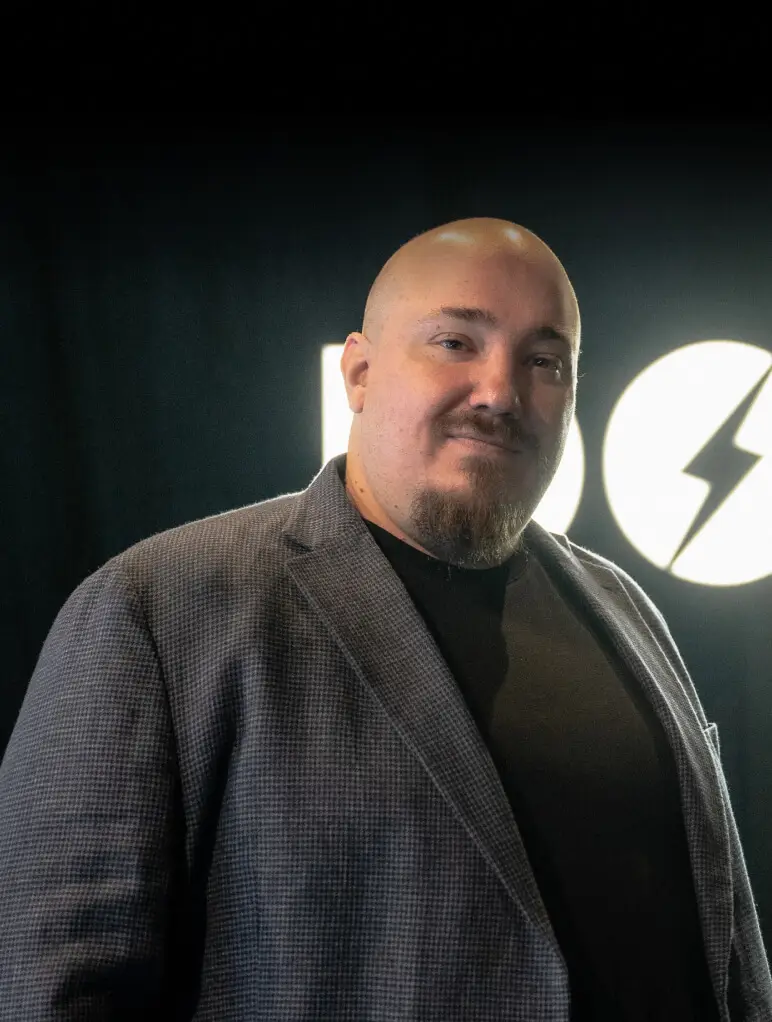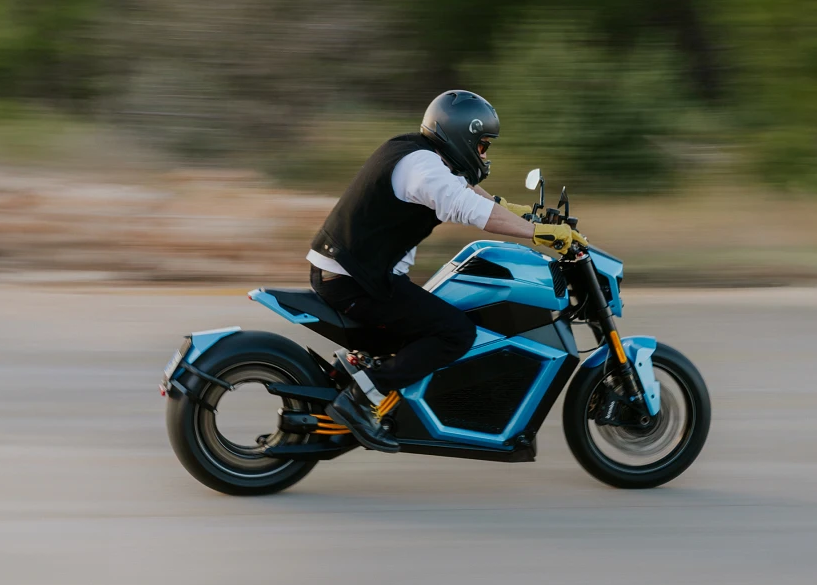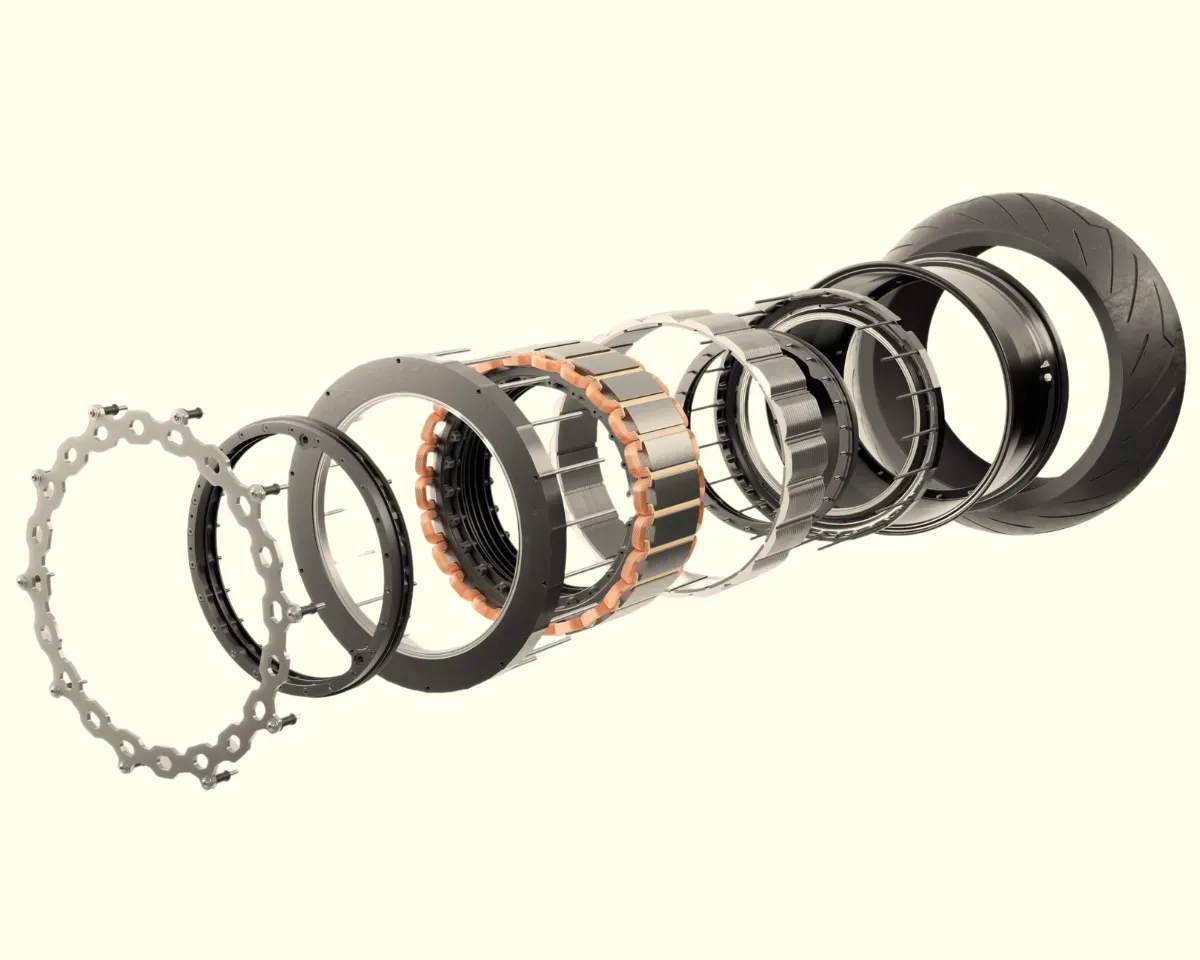
InsightEV: Marko, welcome to the InsightEV interview! We’ve been hearing a lot about Donut Lab and the excellent response you received at CES. Before that, we saw the hardware and software applications in Verge Motorcycles. We wanted to learn more about the concept behind Donut Lab and how you are helping your clients.
Marko Lehtimaki: We are a provider of a platform that includes both components (Hardware & Software), but we have a more grand vision, which is to provide the entire toolchain to accelerate software development required by your EV, including a full simulation of all EV logic in a digital-twin. From the components’ perspective, all our components have been designed to work perfectly together. With this, we are creating a library of core components of any EV that you can mix and match. You may want to start by integrating our motors, but if you want to accelerate your EV development, you may also decide to use battery modules and electronics from our platform.
We are creating almost universal building blocks regardless of the use case, whether you’re building a semi-truck, supercar, moped, or drone. You can use the same architecture and the same principles. If you can build one type of vehicle with us, you can also use our platform to build another. True modular architecture with pre-integrated components is one of the biggest things missing in the automotive industry.
Of course, this touches on automotive and branches into robotics and autonomous vehicles. We are so used to working the usual way in compiling the bill of materials. The core components that need to work together come from many different sources, with different product strategies, and different ways of looking at how things work. They have not been designed to be used together, and it takes a lot of time and resources from the traditional OEMs. If the European or American car companies want to be competitive, some changes must be made. They need to change something drastically. And we believe we have the solution. When it comes to smaller companies, the challenge is that most of these are just starting, and they don’t realize how much work there is to get everything together. We’re offering a better way to build an EV.
The amount of work we can remove from somebody’s building, first a prototype, and then something that could be going into mass production, we are talking about at least an 80% reduction in the integration work and development.

InsightEV: All the prospective startups who want to enter this area have to do is design the frame architecture around that. So, Donut Lab cuts the development time by at least a year or so?
Marko: Our goal is that if I order those components, say, one or maybe two motors, and all the other subsystems, as soon as you plug these components together, including the central computing unit, we will guarantee that your vehicle works from immediately. So, even if you don’t have a steering wheel, you can connect through Wi-Fi to the development board of the computing unit and move the tires with your phone. We are making it that simple, and we are also working with some partners.
For example, we announced our partnership with QT Group in January, the leading HMI provider for large automotive. They joined as our first publicly announced technology partner, where their value proposition is that once you connect these components, they guarantee that if you attach an LCD screen or an iPad through Wi-Fi, they will be able to provide a working real-time instrument cluster, configured based on the type of vehicle that you have created. If you have five cameras in your car, it will show a configuration designed to show five cameras.
They are just one out of the many partners that we are working with. We are creating an ecosystem of technology providers in software and hardware and even extending services to make it possible to approach the creation of vehicles in a whole new way. Even though I mentioned small companies and startups, advanced engineering groups in large automotive companies work the same. The best ones are more like startups inside the company, and those are the ones who are adopting new technologies – any organization that appreciates the ability to move fast and get things done.
We do acknowledge that the traditional OEMs have their way of doing things and very long supplier relationships and contracts. It would be naive to say that some of the largest companies would decide to get all the components from us as a platform. But over time, that will start to happen if we succeed in what we are trying to build here.

InsightEV: So, if I understand it correctly, let’s say I’m a scooter manufacturer in Italy, and I want to use the 12” Donut motor. Do I get the design and IP from Donut Lab, or do you also work as a production partner?
Marko: We do provide the components themselves. So you don’t need to, and it would be challenging for companies to start building because nobody’s ever built these types of motors. We provide everything, so it’s like buying off-the-shelf electric motors from an existing provider today. We now have five motors, the main motors for different use cases. There’s a whole pipeline of other motors to come later, but these are the first kinds of motors in our catalog. When we do work with an OEM, especially the large ones, they have certain exact specifications, and their required torque and power is, say, 25% less than what our off-the-shelf model has. So, we will then work with them and provide a variant of our motor. But that is a relatively straightforward process.
We have a library of off-the-shelf motors, and you’ll be able to use more power or torque than you need. Then, when you go to high volumes and optimize the price, you may likely want us to tailor one of these components. The same goes for battery modules; you may want to tailor it a little bit, but at the same time, you will know that the logic, the integration, and all these things are the same.

InsightEV: Where is your production facility? Is it in Finland only?
Marko Lehtimaki: We currently have Finland and Estonia and plan to open in many other places. We are starting some production in the UK and have quite a unique model as we scale. I cannot go into details now, but we will have factories in major hubs where these components are needed, both in Asia and Europe.
InsightEV: Marko, I understand it’s a unique motor we have not seen in the automotive industry earlier. I’ve already seen the application for Verge Motorcycles. But what makes the battery unique?
Marko Lehtimaki: It’s not the battery cells themselves. It is more in choosing certain types of materials and architectures and so forth. Some things are now pending patents we have on the battery pack. It has more to do with certain aspects that are important in automotive applications, such as heat and vibrations, but we’ve also been able to charge the packs faster than in a typical battery pack. It is 50 small things rather than one big thing. We’ve been trying to ensure that we optimized around the motorcycle at first because that is one of the tightest kinds of packaging constraints, and any excess heat it would produce would be very problematic. So, that pushed us to come up with some clever solutions.

The outcome is that the charging time is faster, and heat is less of a problem. But those are efficiency improvements, not as radical as the motor, which is out of this world. If we look from the big picture perspective, what is interesting to those who want to embrace our larger platform, including the batteries, is the way you can fit them together. It’s almost like creating from Lego blocks. We haven’t yet announced the whole architecture, so I cannot go so much deeper into that. Still, there will be multiple sizes of battery modules that you can then plug together and create a bigger battery pack very efficiently for different types of use cases, whether a very small or very large space.
So, from that perspective, the key aspects of the battery are the packaging and the intelligent design.
InsightEV: These battery packs have cylindrical 2170 cells.
Marko Lehtimaki: Yeah, but a lot of innovation is happening in this area as well. So there may also be some changes coming at some point. I don’t want to go too deep because there is nothing to announce today. Regardless of the technology, the main idea is that you can create a medium-sized drone and package batteries into it with the same architecture as if you’re building a semi-truck that needs five times that of a regular car. There are different sizes of modules, and then you can stack any number of them together.

InsightEV: Got it. You announced that you already have the first few clients working with you.
Marko Lehtimaki: Yes, they are, and we are already quite busy at the end of the year because we officially came out of stealth in November. But we hadn’t released the family of motors and the actual specifications. We only hinted at them through the use cases of some of the early customers. So, we were busy in serious talks with tens of companies and planning how to bring their products to market with our technology.
Then, after we made the major announcement in January at CES, we got around 30 times more companies that are actively talking with us now. We’ve gone to hundreds of companies seriously considering – or already decided on – using our technology in their vehicles. That has made us very busy in a very short time, and the timing seems perfect. The idea of in-wheel motors has been there forever. Even traditional OEMs acknowledge that we know that it would make so much more sense than all the drivetrain power transmission systems happening now.
However, weight has been the issue. That is the main thing – not enough power and torque, and too much weight in each corner of the vehicle. That provides such bad driving dynamics if the weight is too much. But there is a deep understanding of these issues, maybe partially thanks to multiple other companies building in-wheel motors and boldly claiming their motors’ benefits. I think that from this perspective, the market has been educated enough to understand quite deeply the benefits of these types of motors.

So then, when you just show the specifications, everybody gets what it means, and that’s how we felt at CES: the OEMs that came to talk to us already knew what this meant for their applications. They wanted to confirm if these numbers would be true if we built it like this, which was very exciting.
We are seeing use cases in a very wide range of applications, from heavy machinery and big machines that are more for work usage as well as from very small vehicles to SUVs, supercars, buses, and so forth.
So a very wide range of use cases, and that’s perfect for us because that’s why we wanted to also, with our first batch of motors, to show the diversity in the kinds of motors that you can create and kind of get people’s imagination going because the benefits are equivalent regardless of which of our motors you want to use and they are simply more power, more torque, or less weight and less cost. And in a lot of cases both, because you want a little bit more power, a little bit more torque. However, you’re still saving weight and still saving on the cost. So that’s the situation right there. We will have many partnerships in that area to announce throughout this year.
Things are happening with various OEMs in different stages. Some small companies are building something very innovative, and we’re happy to be part of that. Then there are some very large companies whose plans may take longer but are committed to working with us and bringing their next platforms to support our motors and other technologies.

Then there are these premium, low-volume companies between these two. In each category, there are plenty of companies we are now engaged with, and this also means that we are accelerating the aggressive timeline and road map for what we want to do. This even took us by surprise. We knew this market need existed, but we assumed that education would take some time. We expected people to be more skeptical, but what we’ve seen has already encouraged us to start making certain kinds of investments. So we are making some acquisitions and investments to support our growth.
InsightEV: My understanding is that your components would be more helpful for small companies, or is that not the case?
Marko Lehtimaki: If you are a big manufacturer, and we can reduce your bill of materials cost by 2,000 Euros per vehicle, that’s going to save you hundreds of millions, if not more, just by switching to our motor. The benefits are absolutely massive for the large players. But the reality is that everyone – both large OEMs and startups – sees the benefits of this kind of technology. If you take 10 large companies, each one may want to move forward. But there are more internal politics and maybe delays in making certain decisions than there are in companies where the founders of the company are running the business or where at least the decision-making is more straightforward. There are fewer alliances and fewer things that may complicate the speed of adoption. This is not specific to anything that we are doing, but it is just how the industry works. But eventually we believe the best technology will win, and even the companies that are slow to adopt will decide to go forward. Hopefully not too late for them.

If we forecast the next 18 months for how many large company announcements we will see that are adopting Donut Motors versus how many smaller company announcements we will see, I think it will be more small company announcements. The larger company timelines are longer, but at the same time, we are talking to almost 100 large OEMs right now. So there is really a lot of interest on that side, and some of them are already going into commercial agreements.
Benefits of pre-integrated components and platform approach are well understood by large companies. If they’re an advanced engineering group or some team that is reviewing the technology, they can get all the technology and all the components that are designed to work together from us. So they will spend less money on prototyping and getting things like rolling chassis or prototypes to move. But then our expectation is that if they are already buying batteries from somewhere, they may continue to buy batteries from those, and we are fine with them just buying the MCU and motor from us in the first stage. That’s where it’s a little bit different when compared to new projects because they have a thousand software engineers waiting to get busy with a new project.
But the gains are enormous for a company that hasn’t built EVs. They can save years of development time by adopting this new way of building EVs. That makes a huge difference.
InsightEV: Interesting. I see the advantage that it shortens the development time for anyone entering the market. I think there’s great flexibility – you have motors from 12” to 21”. Within the motor sizes, is there flexibility that, let’s say a 12” motor is 15 kW, but can I get it lower, or can I go slightly higher?
Marko Lehtimaki: Today, we provide a kind of off-the-shelf specific variants, but then we are talking with many companies that are looking exactly at the 12” and asking if we can go from 15 kW to 30 kW. That’s kind of easy because if you just increase the voltage from 48V and go to 96V, then you already have 30 kW of power. That’s kind of relatively easy. But if you want to make any adjustments regarding torque and power, we can make variants of the motor and are happy to do so.
This motor design is perfect for these types of variants because the motor is fully symmetrical in all dimensions. So when we increase the width by 25%, we get 25% more torque and power; if we reduce it by 30%, the same happens. Similarly, when we increase the radius, we go into an exponential jump in specs.
So, if you have some really big heavy machines, you start to get such numbers that you may find unbelievable. You have to look twice, kind of, can this even be true? But even in these smaller sizes and even going into smaller drone motors, we still have way more torque and power per kilogram than any other motor with the same dimensions. One of the important aspects there is that we could get to a higher power and torque by using exotic materials. But that would be an easy way – we could increase the power and torque without being very innovative. But we have specifically decided not to do that. We use the same grade of materials that everybody else does. We are very smart with the design and the engineering, and what this has meant is if somebody still wants to massively increase any of the numbers, we are happy to change to more expensive materials. I would say the defense industry applications may be such a use case because price is not the issue, and it’s more about capability.

But when it comes to the big picture, because we can create the same amount of power and torque with much less weight, that means that our material costs are also comparably smaller. So we’re able to provide these super motors with very competitive cost. This is quite important because we are already saving with the drivetrain. If you take an SUV, the first question is, you decide that we want to go with in-wheel motors because we would save a lot of money by removing more than 100 parts from the drivetrain.
But then they look at the options that are available, and they realize that every other vendor except for Donut Lab adds such weight to each corner that the unsprung mass is more than 30 kg extra. That means that it will start to affect the driving dynamics. So you’re blocked from making that decision. That’s why many are happy that they are finding now that we are pushing to a whole new level of torque density and power density. With this, they can realize the actual savings that are theoretical if you don’t have the right kind of motor.
They are looking at whether we are now going to use Donut motors in our next SUV as we are not compromising on the driving dynamics and the spring-mass, and at the same time, we are able to save a couple of thousand euros by just removing the drivetrain. But on top of that, even if they compare our motor to any motor that they would use traditionally – even forgetting about the cost savings by removing the drivetrain – they’ll be surprised that we are actually able to sell them the same performance with lightweight and lower price. This is kind of the holy grail of component design.

Suppose you can provide better performance, lower weight, and lower cost in the same package while not bringing really any downsides to the design. This is also interesting from the robotics perspective. For example, ABS has a cycle time of 70 millisecond frequency at which it can be controlled. Our motor has sub 10 milliseconds control frequency, which means that you can make 100 decisions a second, way faster than a traditional motor, and when the motor can react say, 10 times more frequently than with another solution, that gives such an accuracy to motor control that you can basically create full software-defined driving dynamics.
You can make the car feel like it’s a large SUV even though it’s a medium-sized SUV. Or you can make it feel like a race car even though it’s not, by very smart control of how the delays in different motors in the different wheels happens, when you have all-wheel drive. From the safety perspective, you can stop way faster. You can also accelerate much faster because you can control the motor much faster.
When it comes to traction control and driving on slippery roads, the ability to react to every grain of sand on the road gives so much smoother overall experience that it is quite interesting to automakers. It’s maybe not the easiest thing to market, but then you just know it from the experience of driving the car that, there’s something different here. Of course, you can measure all these reaction times with real numbers.
InsightEV: Great. So, how are Verge Motorcycles doing.
Marko Lehtimaki: It is doing very well. I’m the CEO of Donut Lab and we now have two different entities. We are now in the process of separating the two companies completely – my brother Tuomo is the CEO of Verge and I’m there on the board. I can definitely share from the big-picture angle.

There’s a lot of excitement and growth happening. Last year, we opened our first batch of stores both in the US as well as UK, and Europe. Now, we are opening more stores, and we are getting people in various countries across Europe to experience our bikes. We are now present in Germany and the UK officially through our stores. We are doing test ride tours in Spain, southern France, and elsewhere. We are really at an interesting point. We are also in the midst of raising a Series-B investment round, our first institutional investment round.
The company is getting closer to profitability, which is also a great thing. We have been able to perfect our production and make a lot of small changes across the year to our bikes. They are built like tanks, but we’ve also been able to remove some excess material, optimizing the weight further. So we are really in a healthy position from the kind of efficiency, operations, and finance perspective, that’s why we are now accelerating deliveries.
There are some announcements coming later this year. For years, other two-wheeler companies came to Verge and asked if we could also utilize this technology (Donut motors) in our two-wheelers, and now that’s what Donut Lab is doing.
Verge is actually in a very interesting position as a standalone company now where it has exclusivity to the Donut technology for two-wheelers. We are working now to not just bring the Donut motor but also the rest of the technology stack – Starmatter and Starmatter Vision, the safety features, to other OEMs. There’s quite a few announcements coming later this year where multiple motorcycle companies are starting to adopt some of the technologies that we pioneered at Verge. So besides working on a lot of exciting things in our own pipeline we are also starting to enable others who have wanted to license our technology for years.



